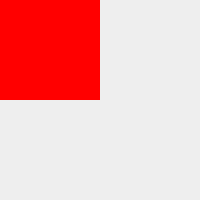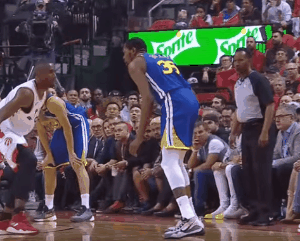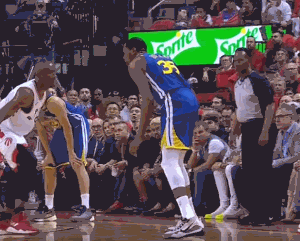Encode GIFs with Node.js
npm install gif-encoder-2
This library builds on top of previous JavaScript GIF encoders including jsgif and gifencoder.
This library adds the Octree quantization algorithm as an alternative to the original NeuQuant algorithm.
This library adds a simple optimizer to speed up overall processing time of both algorithms.
This library adds a progress event.
This library is designed to be used in a Node environment, including the Electron renderer process. Node Canvas can be a useful peer library but isn't required. The [HTML Canvas API] can be used in Electron.
GIFEncoder(width, height, algorithm, useOptimizer, totalFrames)
| Parameter | Type | Description | Required | Default |
|---|---|---|---|---|
width |
number | the width of images in pixels | yes | n/a |
height |
number | the height of images in pixels | yes | n/a |
algorithm |
string | neuquant or octree |
no | neuquant |
useOptimizer |
boolean | enables/disables optimizer | no | false |
totalFrames |
number | total number of images | no | 0 |
const encoder = new GIFEncoder(500, 500)
const encoder = new GIFEncoder(1200, 800, 'octree', false)
const encoder = new GIFEncoder(720, 480, 'neuquant', true, 20)| Method | Parameter | Description | Notes |
|---|---|---|---|
start |
n/a | Starts the encoder | n/a |
addFrame |
Canvas Context, delay |
Adds a frame to the GIF | delay (milliseconds) param is optional. Fallbacks to global delay if none given |
setDelay |
number | Number of milliseconds to display frame | Can be set once or per frame |
setFramesPerSecond |
number | Number of frames per second to display | Another way to set delay |
setQuality |
number 1-30 | Neuquant quality | 1 is best/slowest |
setThreshold |
number 0-100 | Optimizer threshold percentage | Color table reused if current frame matches previous frame |
setRepeat |
number >= 0 | Number of loops GIF does | 0 is forever, anything else if literal number of loops |
finish |
n/a | Stops the encoder | Call after all frames are added |
Draw a square that changes color as it moves.
const GIFEncoder = require('gif-encoder-2')
const { createCanvas } = require('canvas')
const { writeFile } = require('fs')
const path = require('path')
const size = 200
const half = size / 2
const canvas = createCanvas(size, size)
const ctx = canvas.getContext('2d')
function drawBackground() {
ctx.fillStyle = '#ffffff'
ctx.fillRect(0, 0, size, size)
}
const encoder = new GIFEncoder(size, size)
encoder.setDelay(500)
encoder.start()
drawBackground()
ctx.fillStyle = '#ff0000'
ctx.fillRect(0, 0, half, half)
encoder.addFrame(ctx)
drawBackground()
ctx.fillStyle = '#00ff00'
ctx.fillRect(half, 0, half, half)
encoder.addFrame(ctx)
drawBackground()
ctx.fillStyle = '#0000ff'
ctx.fillRect(half, half, half, half)
encoder.addFrame(ctx)
drawBackground()
ctx.fillStyle = '#ffff00'
ctx.fillRect(0, half, half, half)
encoder.addFrame(ctx)
encoder.finish()
const buffer = encoder.out.getData()
writeFile(path.join(__dirname, 'output', 'beginner.gif'), buffer, error => {
// gif drawn or error
})Create a function that reads a directory of images and turns them into a GIF.
const GIFEncoder = require('gif-encoder-2')
const { createCanvas, Image } = require('canvas')
const { createWriteStream, readdir } = require('fs')
const { promisify } = require('util')
const path = require('path')
const readdirAsync = promisify(readdir)
const imagesFolder = path.join(__dirname, 'input')
async function createGif(algorithm) {
return new Promise(async resolve1 => {
// read image directory
const files = await readdirAsync(imagesFolder)
// find the width and height of the image
const [width, height] = await new Promise(resolve2 => {
const image = new Image()
image.onload = () => resolve2([image.width, image.height])
image.src = path.join(imagesFolder, files[0])
})
// base GIF filepath on which algorithm is being used
const dstPath = path.join(__dirname, 'output', `intermediate-${algorithm}.gif`)
// create a write stream for GIF data
const writeStream = createWriteStream(dstPath)
// when stream closes GIF is created so resolve promise
writeStream.on('close', () => {
resolve1()
})
const encoder = new GIFEncoder(width, height, algorithm)
// pipe encoder's read stream to our write stream
encoder.createReadStream().pipe(writeStream)
encoder.start()
encoder.setDelay(200)
const canvas = createCanvas(width, height)
const ctx = canvas.getContext('2d')
// draw an image for each file and add frame to encoder
for (const file of files) {
await new Promise(resolve3 => {
const image = new Image()
image.onload = () => {
ctx.drawImage(image, 0, 0)
encoder.addFrame(ctx)
resolve3()
}
image.src = path.join(imagesFolder, file)
})
}
})
}
createGif('neuquant')
createGif('octree')NeuQuant Algorithm
Octree Algorithm
- NeuQuant tends to perform faster than Octree
- Octree tends to output a smaller file than NeuQuant
- Octree produces a slight banding effect
The example above encodes 20 images measuring 300px x 240px. The output file from NeuQuant is 1172KB and the Octree is less than half of that at 515KB.
The optimizer works by reusing the color palette from the previous image on the current image. This can reduce the overall processing time signifigantly but its best suited for a sequence of similarly colored images. Use the setThreshold method to set a percentage determining how similar the two images must be to trigger the optimizer. The default is 90%. The optimizer is only used if true is passed as the 4th argument to the constructor.
Works if totalFrames is expressed in constructor, otherwise this value will be 0.
encoder.on('progress', percent => {
// do something with percent value
})

